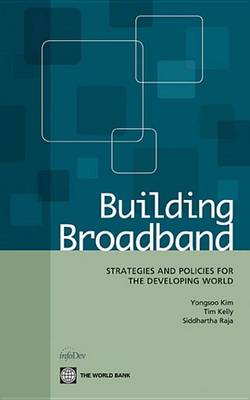The year 2000 initiated a decade of spectacular growth in the information and communication technology sector in developing countries. Almost 75 percent of the world's mobile telephone subscriptions are in low- and middle-income countries, which have also promoted exciting innovations and realized significant economic development benefits. However, the adoption and use of broadband technology is another matter. Countries in North America and the European Union account for more than 50 percent of the world's 1 billion fixed and mobile broadband subscriptions, but South Asia and Sub-Saharan Africa together account for less than 3 percent. This inequality threatens to create a new digital divide. Access to broadband connectivity is a country's passport to the global information society and knowledge economy-the future. A growing number of countries, however, are seeking to spur broadband development. To aid policy makers and regulators as they design their own programs, this volume offers examples and ideas from some of the most successful broadband markets. The focus is on the Republic of Korea, but other case studies include Finland, France, Japan, Sweden, the United Kingdom, and the United States. Building Broadband does not suggest a universal solution but rather provides a long list of policies and programs organized within a strategic framework that allows solutions tailored to country circumstances. The three essential building blocks identified-be visionary yet flexible, use competition to promote market growth, and facilitate demand??-are useful everywhere because they focus on improving incentives and the climate for private investment. This is a policy that even countries with very limited resources should be able to follow.
- ISBN10 0821384201
- ISBN13 9780821384206
- Publish Date 14 May 2014 (first published 22 June 2010)
- Publish Status Active
- Publish Country US
- Imprint World Bank Publications
- Format eBook
- Pages 188
- Language English
